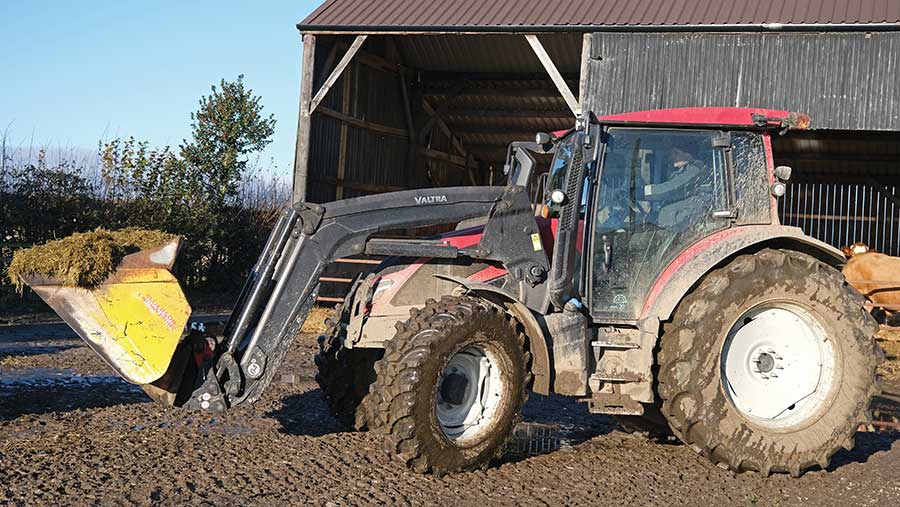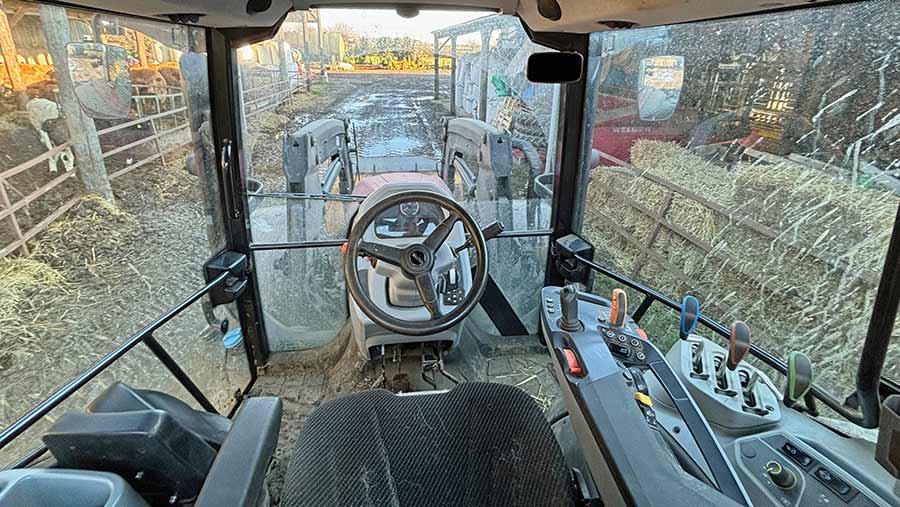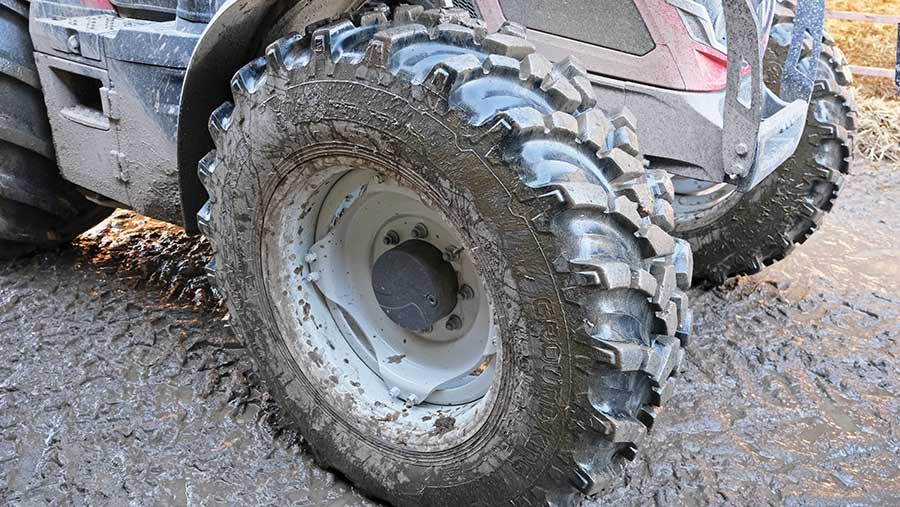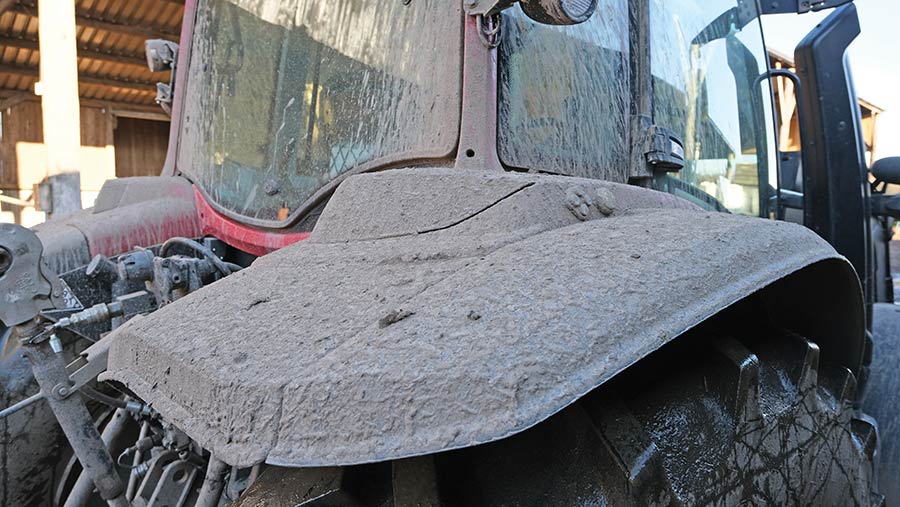Driver’s view: Valtra G125e Active tractor
 © James Andrews
© James Andrews Spanning a power bracket of 105hp to 135hp, Valtra’s versatile G-series neatly bridges the gap between the compact A and higher-spec N ranges.
All models are driven by a Chinese-built version of Agco’s 4.4-litre, four-cylinder engine, and they’re fitted with a Gima, four-range, six-powershift transmission, as used by Massey Ferguson and Claas.
See also: How to keep a four-cylinder Valtra N-series running at its best
It’s available in Valtra’s usual three semi-powershift spec levels – HiTech, Active and Versu – with the former having simple open-centre hydraulics and the top two getting fancier load-sensing setups.
Our G-series guide is Yorkshire farmer Phil Bramley, who runs a 120ha mixed farm and builds custom drills under the name Bramley’s Seed Establishment.
His tractor is a mid-range G125e, which is the only model to have an Eco mode that dials down the power and torque for better fuel economy.

Phil Bramley © James Andrews
Phil Bramley’s Valtra G125E Active stats
- Engine 4.4-litre, four-cylinder Agco Power
- Power Eco 115hp (125hp with boost); Power 125hp (130hp with boost)
- Transmission Four-range, six-speed
- Hydraulics 110 litres/min
- Rear lift capacity 6,000kg
- Price paid £64,000
Why a Valtra G125e?
For years, my main loader tractor was a Valtra 6550 and I have a 1970s Massey Ferguson 11 shovel for loading grain lorries.
They’re both good machines, but the 6550 is now on 11,000 hours and the loading shovel is getting a bit tired, so I decided to upgrade to a newer tractor that could do all the handling jobs.
I looked at the N-series, but it was a bit too expensive for my needs, so I got a G-series out on demo from Wilfred Scruton and was impressed with its performance.
Rather than order one and choose the spec – I quite fancied one in blue – I did a deal on this G125e stock machine with 50 hours on the clock, saving myself about £10,000.

© James Andrews
What extras did you opt for?
I didn’t get much choice in the spec, but it was already close to what I wanted, with a Valtra-branded loader that’s operated using the small electronic joystick on the armrest.
For filling grain lorries, I ordered a big toe-tip bucket that can hold about 1.25t of wheat and 1t of oats.
The tractor handles this with no problems, although I do pick up a weight on the rear linkage to help balance it out.
The cycle times are also impressively quick as the Active-spec tractors come with fast load-sensing hydraulics.
One change I did request was swapping the regular front tyres for Nokian Ground Kings, which I hoped would be less likely to dig holes in our stone yard.
They seem to have done the trick and they’ve got plenty of grip for my needs.

Nokian Ground Kin tyres © James Andrews
How has it performed?
I love the way the tractor drives and the cab gives great visibility for loader work, but it’s had several irritating problems in the first 150 hours.
Jobs fixed under warranty include a cab roof that popped out of the gutter rail, oil leaks on the top of the gearbox caused by fittings that weren’t properly tightened, and leaking front suspension rams.
The most recent failure is a gearbox pressure sensor which looks like it won’t be covered by the standard one-year warranty.
Luckily, I paid for two extra years, but I might have to pay an excess to use this. The clutch pedal is also creaky.
Problems aside, I’ve enjoyed driving it and it’s got plenty of power. So much so that I leave it in Eco mode most of the time, which means it’s running at 115hp, or 125hp with boost.
Torque is about the same as the standard mode though, so it still pulls well even with a grain trailer on the road.
Any room for improvement?
It’s obviously a cheaper tractor than an N-series, but the build quality and finish is a bit disappointing.
One of the biggest problems is with the rear mudguards, which are so short that mud flicks up, plastering the lights and rear window, even when travelling slowly.
Then there are the fender switches, which are positioned at the top of the mudguards, well away from where you actually want them on the rear.

The short mudguards © James Andrews
The location of the trailer brake connector hasn’t been well thought out either, as it’s too high for most trailer pipes to reach. I’ve ended up adding an extension to move it further down.
Likes and gripes
Likes
- Neat electronic loader joystick
- Good cab visibility
- Plenty of power, even in Eco mode
- Slick transmission
Gripes
- Short rear mudguards
- Awkwardly placed fender switches
- Disappointing build quality
- Poorly positioned trailer brake connector

